Jim DiEugenio’s
excellent and very important “How CBS News Aided the JFK Cover-up” – April 22,
2016 for Consortium News
https://consortiumnews.com/2016/04/22/how-cbs-news-aided-the-jfk-cover-up/
How CBS News Aided the JFK
Cover-up
April 22, 2016
Special Report: With the
Warren Report on JFK’s assassination under attack in the mid-1960s, there was a
chance to correct the errors and reassess the findings, but CBS News intervened
to silence the critics, reports James DiEugenio.
By James DiEugenio
In the mid-1960s, amid
growing skepticism about the Warren Commission’s lone-gunman findings on John
F. Kennedy’s assassination, there was a struggle inside CBS News about whether
to allow the critics a fair public hearing at the then-dominant news network.
Some CBS producers pushed for a debate between believers and doubters and one
even submitted a proposal to put the Warren Report “on trial,” according to
internal CBS documents.
But CBS executives, who
were staunch supporters of the Warren findings and had personal ties to some
commission members, spiked those plans and instead insisted on presenting a
defense of the lone-gunman theory while dismissing doubts as baseless
conspiracy theories, the documents show.
Though it may be hard to remember – amid today’s
proliferation of cable channels and Internet sites – CBS, along with NBC and
ABC, wielded powerful control over what the American people got to see, hear
and take seriously in the 1960s. By slapping down any criticism of the Warren Commission,
CBS executives effectively prevented the case surrounding the 1963
assassination of President Kennedy from ever receiving the full airing that it
deserved.
Beyond that historical significance, the internal
documents – compiled by onetime CBS News assistant producer Roger Feinman – show how a major mainstream news organization
green-lights one approach to presenting sensitive national security news while
blocking another. The documents also shed light on how senior news executives,
who have bought into one interpretation of the facts, are highly resistant to
revisit the evidence.
Buying In
CBS News jumped onboard the blue-ribbon Warren
Commission’s findings as soon as they were released on Sept. 27, 1964, just
over 10 months after President Kennedy was assassinated in Dallas, Texas, on
Nov. 22, 1963. In a special report, CBS and its anchor Walter Cronkite
preempted regular programming and, with the assistance of reporter Dan Rather,
devoted two commercial-free hours to endorsing the main tenets of that report.
However, despite Cronkite
and Rather giving the Warren Report their public embrace, other people, who
were not in the employ of the mainstream media, examined critically the report
and the accompanying 26 volumes. Some of these citizens were lawyers and others were professors, the
likes of Vincent Salandria and Richard Popkin. They came to the
conclusion that CBS had been less than rigorous in its examination.
By 1967, the analyses challenging the Warren Report’s
conclusions had become widespread,
including popular books by Edward Epstein, Mark Lane, Sylvia Meagher and Josiah
Thompson. Thompson’s book, Six Seconds in Dallas, was excerpted and placed on
the cover of the wide-circulation magazine Saturday Evening Post. Lane was
appearing on talk shows. Prosecutor Jim Garrison had announced a reopening of
the JFK case in New Orleans. The
dam was threatening to break.
The doubts about the
Warren Report had even spread into the ranks at CBS News, where correspondent
Daniel Schorr and Washington Bureau chief Bill Small recommended a fair and
critical look at the report’s methodology and findings. Top prime-time producer
Les Midgley later joined the effort.
CBS News vice president Gordon Manning sent the proposal
on to CBS News president Richard Salant in August 1966, but it was declined.
Manning tried again in October, suggesting an open debate between the critics
of the Warren Report and former Commission counsels, moderated by a law school dean or the president of
the American Bar Association. The idea was to give the two sides a chance to
make their best points before the viewing public.
Zapruder Evidence
One month after Manning’s debate proposal, Life Magazine
published a front-page story in which the Warren Commission’s verdict was questioned by photographic evidence from the
Zapruder film (which the magazine owned). Life also interviewed Texas Gov. John
Connally who disagreed that he and Kennedy had been hit by the same shot, a
claim that undercut the “single bullet theory” at the heart of the Warren
Report.
A frame from the Zapruder
film capturing the first shot that struck President John F. Kennedy on Nov. 22,
1963.
Without the assertion that
a single bullet inflicted multiple wounds on Kennedy and Connally, who was
riding in front of the President, the commission’s verdict collapses. The magazine story ended with a
call to reopen the case. Indeed, Life had put together a small journalistic
team to do its own internal investigation.
A few days after this
issue appeared, Manning again pressed for a CBS special. This time he suggested
the title “The Trial of Lee Harvey Oswald,” with a panel of law school deans
reviewing the evidence against Oswald in a mock trial, including evidence that
the Warren Commission had not included. In other words, there would be a chance
for American “jurors” to weigh the evidence that might have been presented
against Oswald if he had lived and to make a judgment on his guilt. Again, this
approach offered the potential for a reasonably balanced examination of the
Kennedy assassination.
At this point, Manning was
joined by producer Midgley, who had produced the two-hour 1964 CBS special.
Midgley’s suggestion differed from Manning’s in that he wanted to title the
show “The Warren Report on Trial.” Midgley suggested a three-night, three-hour
series with one night given over to the commission defenders, one night
including all the witnesses that the commission overlooked or discounted, and the
last night including a verdict produced by legal experts. But the title itself suggested a
level of skepticism that had not been part of the earlier proposals.
The Higher-ups Intervene
However, then CBS senior
executives began to intervene. On Dec. 1, 1966, Salant wrote a memo to John
Schneider, president of CBS Broadcast Group, telling him that he might refer
the proposal to the CBS
News Executive Committee (CNEC). According to information that a former CBS
assistant producer Roger Feinman obtained during a legal hearing against CBS,
plus secondary sources, CNEC was a secretive group that was created in the wake
of Edward R. Murrow’s departure from CBS.
Murrow was a true
investigative reporter who became famous through his reports on Sen. Joe
McCarthy’s abuses and the mistreatment of migrant farm workers. The upper management at CBS did
not like the controversies that these reports generated among influential
segments of the American power structure. There was a perceived need to
tamp down on such wide-ranging and independent-minded investigations. After
all, the CBS executives were part of that power structure.
CBS News president Salant
epitomized that blurring of high-level corporate journalism and America’s
ruling class. Salant had gone to Exeter Academy, Harvard, and then Harvard Law
School. He was handpicked
from the network’s Manhattan legal firm by CBS President Frank Stanton to join
his management team.
CBS News president Richard
Salant
During World War II, Stanton had worked in the Office of
War Information, the psychological warfare branch. In the 1950s, President Dwight Eisenhower had
appointed Stanton to a small committee to organize how the United States would
survive a nuclear attack. From
1961-67, Stanton was chairman of Rand Corporation, a CIA-associated think tank.
The other two members of CNEC were Sig Mickelson, who had
preceded Salant as CBS News president and then became a director of Time-Life
Broadcasting, and CBS founder Bill Paley, who had also served in the World War
II psy-war branch of the Office of War
Information and – after the war – let CIA Director Allen Dulles have the spy
agency informally debrief CBS overseas correspondents.
When Salant turned the
Warren Commission issue over to CNEC, the prospects for any objective or
skeptical treatment of the JFK case faded. “The establishment of CNEC
effectively curtailed the news division’s independence,” Feinman later wrote
about his discoveries.
Further, Salant had no journalistic experience and was in
almost daily communication with Stanton, whose background was in government
propaganda.
Scaling Back
The day after Salant
informed CNEC about the proposed JFK assassination special, Salant told CBS
News vice president Manning that he was wavering on the mock trial concept.
Salant’s next move was even more ominous. He sent both Manning and prime-time
news producer Midgley to California to talk to two lawyers about the project.
One of the attorneys was Edwin Huddleson, a partner in
the San Francisco firm of Cooley, Godward, Castro and Huddleson. Huddleson
attended Harvard Law with Salant and, like Stanton, was on the board of the
Rand Corporation. The other lawyer was Bayless Manning, Dean of Stanford Law
School. They told the CBS representatives that they were against the network
undertaking the project on the grounds of “the national interest” and because
of the topic’s “political implications.”
CBS News vice president
Manning reported that both
attorneys advised the CBS team to ignore the critics of the Warren Commission
or to appoint a special panel to critique their books, in other words, to put
the critics on trial. Huddleson also steered the CBS team to cooperative
scientists who would counter the critics.
On his return to CBS
headquarters, Manning saw
the writing on the wall. He knew what his CBS superiors really wanted
and it wasn’t some no-holds-barred examination of the Warren Commission’s
flaws. So, he suggested a new title for the series, “In Defense of the Warren Report,” and
wrote that CBS should
dismiss “the inane, irresponsible, and hare-brained challenges of Mark Lane and
others of that stripe.”
Out on a Limb
Manning’s defection from
an open-minded treatment of the evidence to a one-sided Warren Commission
defense left producer Midgley out on a limb. However, unaware of what Salant
was up to, on Dec. 14, 1966, Midgley
circulated a memo about how he planned on approaching the Warren Report
project. He proposed running experiments that were more scientific than “the
ridiculous ones run by the FBI.” He still wanted a mock trial to show
how the operation of the Commission was “almost incredibly inadequate.”
In response, Salant circulated an anonymous, undated,
paragraph-by-paragraph rebuttal to Midgley’s plan, which Feinman’s later
investigation determined was written by Warren Commissioner John McCloy, then
Chairman of the Council on Foreign Relations and the father of Ellen McCloy,
Salant’s administrative assistant.
John J. McCloy, one of the
Warren Commission members.
In this memo, McCloy wrote
that “the chief evidence that Oswald acted alone and shot alone is not to be
found in the ballistics and pathology of the assassination, but in the fact of his loner
life.” As many Warren Commission critics have noted, it was this
approach – discounting or
ignoring the medical and ballistics evidence, but concentrating on Oswald’s
alleged social life – that was a fatal flaw of the Warren Report.
Despite the familial
conflict of interest, Ellen McCloy was added to the distribution list for
almost all memos related to the Kennedy assassination project and thus could serve as a secret
back-channel between CBS and her father.
A Stonewall Defense
Clearly, the original idea
for a fresh examination of the Warren Commission and the evidence that had
arisen since its report was published in 1964 had been turned on its head. The CBS brass wanted a defense,
not a critique.
Salant asked producer Midgley, “Is the question whether
Oswald was a CIA or FBI informant really so substantial that we have to deal
with it?” Midgley, increasingly alone out on the limb, replied, “Yes, we must
treat it.”
As the initial plan for a
forthright examination of the Warren Commission’s shortcomings was transformed
into a stonewall defense of the official findings, there was still the problem
of Midgley, the last holdout. But eventually his head was turned, too.
While the four-night special was in production, Midgley
became engaged to Betty Furness, a former actress-turned-television-commercial
pitchwoman whom President Lyndon Johnson appointed as his special assistant for
consumer affairs, even though her
only experience in the field had been selling Westinghouse appliances for 11
years on television. She
was sworn in on April 27, 1967, which was about two months before the CBS
production aired. Two weeks after it was broadcast, Midgley and Furness were
married.
As Kai Bird’s biography of
McCloy, The Chairman,
makes clear, Johnson and McCloy were friends and colleagues. But there
is another point about how Midgley was convinced to go along with McCloy’s view
of the Warren Commission. Around the same time he married Furness, he received a significant
promotion, elevated to executive editor of the network’s flagship news program,
“The CBS Evening News with Walter Cronkite.” This made him, in essence, the top
news editor at CBS, a decision that required the consultation and approval of
Salant, Cronkite and Stanton – and very likely the CNEC.
So, instead of a serious
investigation into the murder of President Kennedy – at a time when there was
the possibility of effective national action to get at the truth – CBS News
delivered a stalwart defense of the Warren Commission’s conclusions and heaped
ridicule on anyone who dared question those findings.
Shaping that approach was not only the influence of
Warren Commission member John McCloy, an icon of the Establishment, but the
carrots and sticks applied to senior CBS producers, such as Gordon Manning and
Les Midgley, who initially favored
a more skeptical approach but were convinced to abandon that goal.
Curious Consultants
Once McCloy was brought
onboard, the complexion of CBS’s treatment of the JFK assassination changed. CBS hired consultants who were
rabidly pro-Warren Report to appear as on-air experts while others would be
hidden in the shadows. In addition to the clandestine role of McCloy, some of
these consultants included Dallas police officer Gerald Hill, physicist Luis
Alvarez and reporter Lawrence Schiller.
Lee Harvey Oswald, the
accused assassin of President John F. Kennedy.
Officer Hill was just about everywhere in Dallas on Nov.
22, 1963. He was at the Texas
School Book Depository where Oswald worked and allegedly shot the President
from the sixth floor; Hill was at the murder scene of Officer J. D Tippit, who
was allegedly shot by Oswald after he fled Dealey Plaza; and he was at the
Texas Theater where Oswald was arrested.
Hill appeared in the CBS
1967 program show as a speaker. But Roger Feinman found out that Hill also was
paid for six weeks work on the show as a consultant. During his consulting, Hill revealed that the police did a
“fast frisk” on Oswald while in the theater. They found nothing in his pockets
at the time, which begs the question of where the bullets the police said they
found in his pockets later at the station came from. That question did
not arise during the program since CBS never revealed the contradiction. (Click
here and go to page 20 of the transcript.)
Physicist Luis Alvarez, who had a served as an adviser to
the CIA and to the U.S. military in the Vietnam War, spent a considerable
amount of time lending his name to articles supporting the Warren Report and
conducting questionable experiments
supporting its findings. As demonstrated by authors Josiah Thompson (in 2013)
and Gary Aguilar (in 2014), Alvarez misrepresented some data in some of his JFK
experiments. (Click here and go to the 37:00 mark for Aguilar’s presentation.)
Making Fun
The same year of the 1967 CBS broadcast, reporter
Lawrence Schiller had co-written a book entitled The Scavengers and Critics of
the Warren Report, a picaresque
journey through America where Schiller interviewed some of the prominent – and
not so prominent – critics of the report and caricatured them hideously.
Secretly, he had been an informant for the FBI for many
years keeping an eye on people like Mark Lane and Jim Garrison, whom Schiller
attacked despite discovering witnesses who attested to Garrison’s suspect Clay
Shaw using the alias Clay Bertrand,
a key point in Garrison’s case. The relevant documents were not declassified
until the Assassination Records and Reviews Board was set up in the 1990s. [See
Destiny Betrayed, Second Edition, by James DiEugenio, p. 388]
This cast of consultants – along with McCloy – influenced the direction of the 1967 CBS Special
Report. The last thing these consultants wanted to do was to expose the faulty
methodology that the Warren Commission had employed.
Longtime CBS News anchor
Walter Cronkite.
As in 1964, Walter Cronkite manned the anchor desk and
Dan Rather was the main field reporter. Again, CBS could find no serious
problems with the Warren Report. The critics were misguided, CBS said. After
all, Cronkite and Rather had done a seven-month inquiry.
‘Unimpeachable
Credentials’
In the broadcast, Cronkite
names the men on the Warren Commission as their pictures appear on screen. He
calls them “men of
unimpeachable credentials” but left out the fact that President Kennedy
fired Commissioner Allen Dulles from the CIA in 1961 for lying to him about the
Bay of Pigs invasion of Cuba.
When Cronkite got to the
crux of the program, he said the Warren Commission assured the American people
that they would get the most searching investigation in history. Then, Cronkite
showed books and articles critical of the commission and mentioned that polls
showed that a majority of Americans had lost faith in the Warren Report.
At that point, the network special revealed its purpose,
to discredit the critics and reassure the public that these people could not be
trusted.
Cronkite went through a
list of points that the critics had raised, including key issues such as how
many shots were fired and how quickly they could be discharged from the suspect
rifle. On each point,
Cronkite took the Warren Commission’s side, saying Oswald fired three shots
from the sixth floor with the rifle attributed to him by the Warren Commission.
Two of three were direct hits – to Kennedy’s head and shoulder area – within six
seconds.
One way that CBS fortified
the case for just three shots was Alvarez’s examination of the Zapruder film, Abraham Zapruder’s
26-second film of Kennedy’s assassination taken from Zapruder’s position in
Dealey Plaza, a sequence that CBS did not actually show.
Alvarez proclaimed that by
doing something called a “jiggle analysis,” he computed that there were three
shots fired during the film. What the jiggle amounted to was a blurring of
frames on the film (presumably because Zapruder would have flinched at the
sound of gunshots).
Dan Rather took this
Alvarez idea to Charles Wyckoff, a professional photo analyst in Massachusetts.
Agreeing with Alvarez, at least on camera, Wyckoff mapped out the three areas
of “jiggles.” The Alvarez/Wyckoff formula was simple: three jiggles, three
shots.
But as Feinman found out through his legal discovery and
hearings, there was a big problem with this declaration. Wyckoff had actually
discovered four jiggles, not three. Therefore, by the Alvarez formula, there
was a second gunman and thus a conspiracy.
President John F.
Kennedy's motorcade enters Dealey Plaza in Dallas on Nov. 22, 1963, shortly
before his assassination. (Zapruder film)
Wyckoff’s on-camera
discussion of this was cut out and not included in the official transcript. But
it is interesting to note just how committed Wyckoff was to the CBS agenda, for
he tried to explain the fourth jiggle as Zapruder’s reaction to a siren. As Feinman noted, how Wyckoff
could determine this from a silent 8 mm film is puzzling. But the point
is, this analysis did not support the commission. It undermined the Warren
Report and was left on the cutting-room floor.
There were other problems
with the Alverez-Wyckoff “jiggle” theory, since the first jiggle was at around Zapruder frame 190,
or a few frames previous to that, which would have meant that Oswald would have
had to be firing through the branches of an oak tree, which is why the
Warren Commission moved this shot up to frame 210.
But CBS left itself an
out, claiming there was an opening in
the tree branches at frame 186 and Oswald could have fired at that point. But
that is patently ridiculous, since the opening at frame 186 lasted for 1/18th of
a second. To say that Oswald anticipated a less than split-second opening, and
then steeled himself in a flash to align the target, aim, and fire is all stuff
from the realm of comic books super heroes. Yet, in its blind obeisance to the Warren Report, this is
what CBS had reduced itself to.
Another way that CBS tried
to bolster the Warren Report was to have Wyckoff purchase other Bell and Howell
movie cameras (since CBS was not allowed to handle the actual Zapruder camera.)
After winding up these cameras, CBS hypothesized that Zapruder’s camera might
have been running a little slow, giving Oswald a longer firing sequence.
The problem with this
theory, however, was that both the FBI and Bell and Howell had tested the speed
of Zapruder’s actual camera. Even
Dick Salant commented that this was “logically inconclusive and unpersuasive,”
but it stayed in the program.
The Shot Sequence
But why did Rather and Wyckoff have to stoop this low? The answer is because of the results of their rifle
firing tests. As the critics of the Warren Report had pointed out, the
commission had used two tests to see if Oswald could have gotten off three
shots in the allotted 5.6 seconds indicated by the Zapruder film.
These tests ended up as failing to prove Oswald could
have performed this feat of marksmanship. What made it worse is that the
commission had used very proficient rifleman to try and duplicate what the
commission said Oswald had done. [See Sylvia Meagher, Accessories After the
Fact, p. 108]
So CBS tried again. This
time they set up a track with a sled on it to simulate the back of Kennedy’s
head. They then elevated a firing point to simulate the sixth floor “sniper’s
nest,” though there were differences from Dealey Plaza including the oak tree
and a rise in the street in the real crime scene. Nevertheless, the CBS
experimenters released the target on its sled and had a marksman named Ed
Crossman fire his three shots.
Crossman had a
considerable reputation in the field, but – even though he was given a week to
practice with a version of the Mannlicher Carcano rifle – his results were not
up to snuff. According to
a report by producer Midgley, Crossman never broke 6.25 seconds (longer than
Oswald’s purported 5.6 seconds) and – even with an enlarged target – he got only
two of three hits in about 50 percent of his attempts.
Crossman explained that
the rifle had a sticky bolt action and a faulty viewing scope. But what the professional sniper
did not know is that the actual rifle in evidence was even harder to work.
Crossman said that to perform such a feat on the first time out would require a
lot of luck.
The Mannlicher-Carcano
rifle allegedly used to murder President John F. Kennedy.
However, since that
evidence did not fit the show’s agenda, it was discarded, both the test and the
comments. To resolve that problem, CBS called in 11 professional marksmen who first went to an indoor
firing range and practiced to their heart’s content, though the Warren
Commission could find no evidence that Oswald practiced.
The 11 men then took 37
runs at duplicating what Oswald was supposed to have done. There were three
instances where two out of three hits were recorded in 5.6 seconds. The best
time was achieved by Howard Donahue on his third attempt after his first two
attempts were complete failures.
But CBS claimed that the average recorded time was 5.6
seconds, without including the 17 attempts that were thrown out because of
mechanical failure. CBS also didn’t tell the public the surviving average was
1.2 hits out of three with an enlarged target.
The truly striking
characteristic of these trials was the amount of instances where the shooter
could not get any result at all. More often than not, once the clip was loaded, the bolt action jammed.
The sniper had to realign the target and fire again. According to the
Warren Report, that could not have happened with Oswald.
There is also the anomaly
of James Tague, who was struck by one bullet that the Warren Commission said
had ricocheted off the curb of a different street, about 260 feet away from the
limousine. But how could Oswald have missed by that much if he was so accurate
on his other two shots? That was another discrepancy deleted by the CBS
editors.
The Autopsy Disputes
CBS also obscured what was
said by the two chief medical witnesses after the assassination by Dr. Malcolm
Perry from Parkland Hospital in Dallas, where Kennedy was taken after he was
hit, and James Humes, the chief pathologist at the autopsy examination at
Bethesda Medical Center that evening.
In their research for the series, CBS had discovered a
transcript of Dr. Perry’s press conference that the Warren Commission did not
have. But CBS camouflaged what Perry said on Nov. 22, 1963, specifically about
Kennedy’s anterior neck wound. Perry said it had the appearance to him of being
an entrance wound, and he said this three times.
Cronkite tried to
characterize the conference as Perry being rushed out to the press and
badgered. But that wasn’t
true, since the press conference was about two hours after Perry had done a
tracheotomy over the front neck wound. The performance of that incision
had given Perry the closest and most deliberate look at that wound.
Perry therefore had the
time to recover from the pressure of the operation and there was no badgering
of Perry. Newsmen were simply asking him questions about the wounds he saw.
Perry had the opportunity to answer the questions on his own terms. Again, CBS seemed intent on
concealing evidence of a possible second assassin — because Oswald could
not have fired at Kennedy from the front.
Commander James Humes, the pathologist, did not want to
appear on the program, but was pressured by Attorney General Ramsey Clark,
possibly with McCloy’s assistance.
As Feinman discovered, the preliminary talks with Humes were done through a
friend of his at the church he attended.
There were two things that
Humes said in these early discussions that were bracing. First, he said that he
recalled an x-ray of the President, which showed a malleable probe connecting
the rear back wound with the front neck wound. Second, he said that he had
orders not to do a complete autopsy. He would not reveal who gave him these orders, except to say that it
was not Robert Kennedy. [Charles Crenshaw, Trauma Room One, p. 182]
The significance of the
malleable probe is that, if Humes was correct, the front and back wounds would
have come from the same bullet. However, we learned almost 30 years later from
the Assassination Records Review Board that other witnesses also saw a malleable probe go through
Kennedy’s back, but said the probe did not go through the body since the wounds
did not connect. However, x-rays that might confirm the presence of the probe
are missing. [DiEugenio, Reclaiming Parkland, pgs. 116-18]
Location of the Wounds
On camera, Humes also said
the posterior body wound was at the base of the neck. Dan Rather then showed
Humes the drawings made of the wound in the back as depicted by medical
illustrator Harold Rydberg for the Warren Commission, also depicting the wound
as being in the neck, which Humes agreed with on camera. He added that they had
reviewed the photos and referred to measurements and this all indicated the
wound was in the neck.
Even for CBS — and Warren Commissioner John McCloy — this
must have been surprising since the autopsy photos do not reveal the wound to
be at the base of the neck but clearly in the back. (Click here and scroll
down.) CBS should have sent its own independent expert to the archive because
Humes clearly had a vested interest in seeing his autopsy report bolstered, especially
since it was under attack by more than one critic.
Autopsy photo of President
John F. Kennedy.
The second point that
makes Humes’s interview curious is his comments on the Rydberg drawings’
accuracy. These do not coincide with what Rydberg said later, not understanding
why he was chosen to make these drawings for the Warren Commission since he was
only 22 and had been drawing for only one year. There were many other veteran
illustrators in the area the Warren Commission could have called upon, but Rydberg came to believe that
it was his inexperience that caused the commission to pick him.
When Humes and Dr.
Thornton Boswell appeared before him, they had nothing with them: no photos, no
x-rays, no official measurements, speaking only from memory, nearly four months
after the autopsy, Rydberg said. [DiEugenio, Reclaiming Parkland, pgs. 119-22] The Rydberg drawings have become
infamous for not corresponding to the pictures, measurements, or the Zapruder
film.
For Humes to endorse these on national television – and
for CBS to allow this without any fact-checking – shows what a case of false
journalism the special had become.
Limiting Access
CBS also knew that Humes
said he had been limited in what he was allowed to do in the Kennedy autopsy, a
potentially big scoop if CBS had followed it. Instead, the public had to wait another two years for the
story to surface at Garrison’s trial of Clay Shaw when autopsy doctor Pierre
Finck took the stand in Shaw’s defense. Finck said the same thing: that Dr.
Humes was limited in his autopsy practice on Kennedy. [ibid, p. 115]
The difference was that
this disclosure would have had much more exposure, impact and vibrancy if CBS
had broken it in 1967 rather than having the fact come up during Garrison’s
prosecution, in part, because the press corps’ hostility toward Garrison
distorted the trial coverage.
So, in the summer of 1967, CBS again had come to the
defense of the official story with a four-hour, four-night extravaganza that
again endorsed the findings of the Warren Commission.
At the time of broadcast, it was the most expensive
documentary CBS ever produced. It concluded: Acting alone, Lee Harvey Oswald
killed President Kennedy. Acting alone, Jack Ruby killed Oswald. And Oswald and
Ruby did not know each other. All the controversy was Much Ado about Nothing.
Unwinding the Back Story
In 1967, the clandestine relationship between CBS News
President Salant and Warren Commissioner McCloy was known to very few people.
In fact, as assistant producer Roger Feinman later deduced, it was likely known only to the very small circle in
the memo distribution chain. That Salant deliberately wished to keep it hidden
is indicated by the fact that
he allowed McCloy to write these early memos anonymously.
As Feinman concluded,
McCloy’s influence over the program was almost certainly a violation of the
network’s own guidelines, which
prohibit conflicts of interest in the news production, probably another reason
Salant kept McCloy’s connection hidden.
In the 1970s, after
Feinman was fired over a later dispute regarding another example of CBS News’
highhanded handling of the JFK assassination – and then obtained internal
documents as part of a legal hearing on his dismissal – he briefly thought of
publicizing the whole affair (which he eventually decided against doing).
But Feinman wrote to
Warren Commissioner McCloy in March 1977 about the ex-commissioner’s
clandestine role in the four-night special a decade earlier. McCloy declined to
be interviewed on the subject, but added that he did not recall any
contribution he made to the special.
But Feinman persisted. On April 4, 1977, he wrote McCloy
again. This time he revealed that he had written evidence that McCloy had
participated extensively in the production of the four-night series. Very
quickly, McCloy got in contact with Salant and wrote that he did not recall any
such back-channel relationship.
In turn, Salant contacted
Midgley and told the producer to check his files to see if there was any
evidence that would reveal a CBS secret collaboration with McCloy. Salant then wrote back to McCloy
saying that at no time did Ellen McCloy ever act as a conduit between CBS News
and her father.
However, in 1992 in an
article for The Village Voice, both Ellen McCloy and Salant were confronted
with memos that revealed Salant was lying in 1977. McCloy’s daughter admitted to the clandestine
courier relationship. Salant finally admitted it also, but he tried to
say there was nothing unusual about it. [See
http://www.assassinationresearch.com/v1n2/mediaassassination.html]
Reassuring Americans
So, in 1967, CBS News had
again reassured the American people that there was no conspiracy in President
Kennedy’s murder, just a misguided lone gunman who had done it all by himself.
Anyone who thought otherwise was confused, deceptive or delusional.
However, in 1975, eight
years after the broadcast, two events revived interest in the JFK case again. First, the Church Committee was
formed in Congress to explore the crimes of the CIA and FBI, revealing that
before Kennedy was killed, the CIA had farmed out the assassination of Fidel
Castro to the Mafia, a fact that was kept from the Warren Commission
even though one of its members, Allen Dulles, had been CIA director when the
plots were formulated.
Longtime CBS anchor Dan
Rather
Secondly, in the summer of 1975, in prime time,
ABC broadcast the Zapruder film, the first time that the American public had
seen the shocking image of President Kennedy’s head being knocked back and to
the left by what appeared to be a shot from his front and right, a shot Oswald
could not have fired.
The confluence of these
two events caused a furor in Washington and the creation of the House Select
Committee on Assassinations (HSCA) to reopen the JFK case.
Having become a chief
defender of the original Warren Commission findings, CBS News moved preemptively to influence the new
investigation by planning another special about the JFK case.
CBS’s Sixty Minutes
decided to do a story on whether or not Jack Ruby and Lee Oswald knew each
other. After several months of research, Salant killed the project with the investigative files
turned over to senior producer Les Midgley before becoming the basis for
the 1975 CBS special, which was entitled The American Assassins.
Originally this was
planned as a four-night special. One night each on the JFK, RFK, Martin Luther
King and the George Wallace shootings. But at the last moment, in a very late
press release, CBS announced that the first two nights would be devoted to the
JFK case. Midgley was the
producer, but this time Cronkite was absent. Rather took his place behind the
desk.
In general terms, it was more of the same. The photographic consultant was Itek Corporation, a
company that was very close to the CIA, having helped build the CORONA spy
satellite system. Itek’s CEO in the mid-1960s, Franklin Lindsay, was a former
CIA officer. With Itek’s
help, CBS did everything they could to move their Magic Bullet shot from about
frame 190 to about frames 223-226.
Yet, Josiah Thompson, who
appeared on the show, had written there was no evidence Gov. Connally was hit
before frames 230-236. Further,
there are indications that President Kennedy is clearly hit as he disappears
behind the Stemmons Freeway sign at about frame 190, e.g., his head seems to
collapse both sideways and forward in a buckling motion.
But with Itek in hand,
this became the scenario for the CBS version of the “single bullet theory.” It
differed from the Warren Commission’s in that it did not rely upon a “delayed
reaction” on Connally’s part to the same bullet.
Ballistics Tests
CBS also employed Alfred Olivier, a
research veterinarian who worked for Army wound ballistics branch and did tests
with the alleged rifle used in the assassination. He was a chief witness for junior counsel Arlen Specter
before the Warren Commission. [See Warren Commission, Volume V, pgs.
74ff]
For CBS in 1975, Olivier
said that the Magic Bullet, CE 399, was not actually “pristine.” For CBS and
Dan Rather, this made the “single bullet theory” not impossible, just hard to
believe.
Apparently, no one
explained to Rather that the only
deformation on the bullet is a slight flattening at the base, which would occur
as the bullet is blasted through the barrel of a rifle. There is no deformation at its
tip where it would have struck its multiple targets. There is only a tiny amount of
mass missing from the bullet.
In other words, as more
than one author has written, it has all the indications of being fired into a
carton of water or a bale of cotton. If CBS had interviewed the legendary
medical examiner Milton Helpern of New York — not far from CBS headquarters —
that is pretty much what he would have said. [Henry Hurt, Reasonable Doubt, p.
69.]
Rather realized, without
being explicit, that something was wrong with Kennedy’s autopsy. He called the
autopsy below par and reversed field on his opinion about pathologist Humes,
whose experience Rather had praised in 1967. In the 1975 broadcast, Rather said
that neither Humes nor Boswell were qualified to perform Kennedy’s autopsy and
that parts of it were botched.
But let us make no mistake
about what CBS was up to here. The
entire corporate upper structure — Salant, Stanton, Paley — had overrun the
working producers and journalists, including Midgley, Manning and Schorr. And
those subordinates decided not to utter a peep to the outside world about what
had happened.
Not only Cronkite and Rather participated in this
appalling exercise, so too did Eric Sevareid, appearing at the end of the last
show and saying that there are always those who believe in conspiracies,
whether it be about Yalta, China or Pearl Harbor. He then poured it on by
saying some people still think Hitler is alive and concluding that it would be
impossible to cover up the assassination of a President.
But simply in examining
how a major news outlet like CBS handled the evidence shows precisely how
something as dreadful and significant as the murder of a President could be
covered up.
Much of this history also
would have remained
unknown, except that Roger Feinman, an assistant producer at CBS News, had become
a friend and follower of the estimable Warren Commission critic Sylvia Meagher.
So, Feinman knew that the Warren Commission was a deeply flawed report and that
CBS had employed some very questionable methods in the 1967 special in order to
conceal those flaws.
When the assassination
issue returned in the mid-1970s, Feinman began to write some memoranda to those
in charge of the renewed CBS investigation warning that they shouldn’t repeat
their 1967 performance. His
first memo went to CBS president Dick Salant. Many of the other memos were
directed to the Office of Standards and Practices.
In preparing these memos,
Feinman researched some of the odd methodologies that CBS used in 1967. Since
he had been at CBS for three years, he got to know some of the people who had
worked on that series. They supplied him with documents and information which
revealed that what Cronkite and Rather were telling the audience had been
arrived at through a process that was as flawed as the one the Warren
Commission had used.
Feinman requested a formal
review of the process by which CBS had arrived at its forensic conclusions. He
felt the documentary had violated company guidelines in doing so.
Establishment Strikes Back
As Feinman’s memos began to circulate through the
executive and management suites – including Salant’s and Vice-President Bill
Small’s – it was made clear to him
that he should cease and desist from his one-man campaign. When he wouldn’t let
up, CBS moved to terminate its
dissident employee.
Roger Feinman
But since Feinman was
working under a union contract, he had certain administrative rights to a fair
hearing, including the process of discovery through which he could request
certain documents to make his case. His research allowed him to pinpoint where
these documents would be and who prepared them.
On Sept. 7, 1976, CBS
succeeded in terminating Feinman. But the collection of documents he secured through his hearing was
extraordinary, allowing outsiders for the first time to see how the 1967 series
was conceived and executed. Further, the documents took us into the
group psychology of a large media corporation when it collides with
controversial matters involving national security.
Only Roger Feinman, who was not at the top of CBS or anywhere near it, had
the guts to try to get to the bottom of the whole internal scandal.
And Feinman paid a high
personal price for doing so. Feinman’s contribution to American history did not
help him get his journalistic career back on track. When he passed away in the fall of 2011, he was
freelancing as a computer programmer.
[This article is largely based on the script for the
documentary film Roger Feinman was in the process of reediting at the time of his
death in 2011. The reader can view that here.]
James DiEugenio is a
researcher and writer on the assassination of President John F. Kennedy and
other mysteries of that era. His most recent book is Reclaiming Parkland.
FOREIGN POLICY, INTELLIGENCE, LOST HISTORY, MEDIA, POLITICS, SECRECY

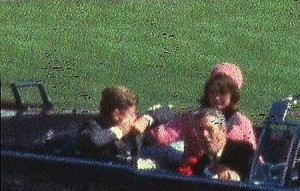
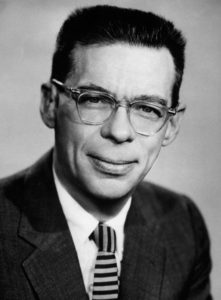
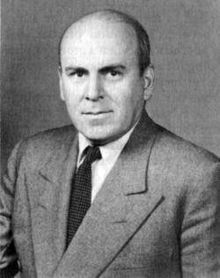
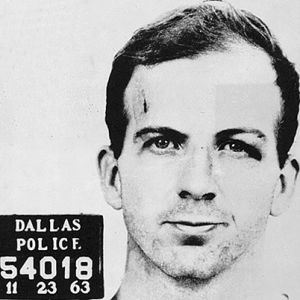
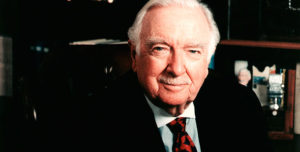
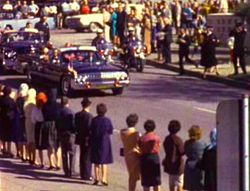
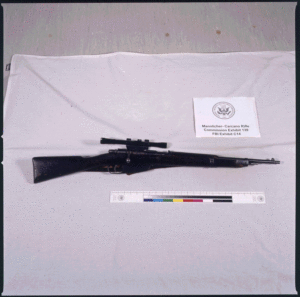
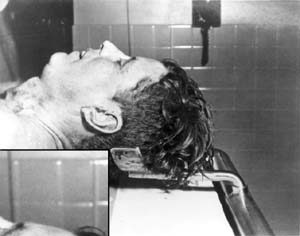

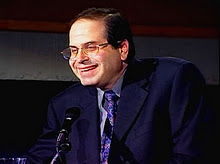
No comments:
Post a Comment